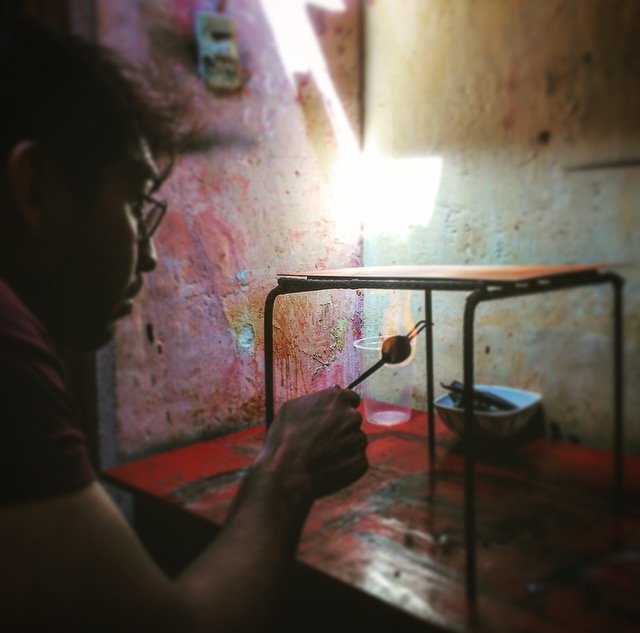Jeff Tocci presents his monograph Animales, a limited edition hardcover pairing creative nonfiction with 94 copperplate etchings, taking the viewer on a visual journey through the origins of multicellular life from the Pre-Cambrian to the present. This portfolio— a tribute to the creatures of the natural world—explores the birth of humanity, the genesis of self expression, grief, and the impact evolution has had on the natural environment. Drawing inspiration from the fleeting wonders of nature, Animales aims to help the viewer contemplate everything that came before us, putting us in touch with the destructive role we play in this story. Through the joyful acceptance of our faults, art can transform this destructive nature within us—and without hurry, these still images present the seen and unseen in an increasingly hurried world.
All images in the book are presented actual size—as originally conceived and pulled from the copper plates under the direction of Marco Velasco and his dedicated team at Espacio Pino Suárez, in Oaxaca, Mexico.
“Jeff Tocci is an original. Think Goya meets R. Crumb. He fuses the figurative and the dream-like, in a totally unique surrealist depiction of natural landscapes and the creatures that exist in them. Animales is more than an art book; it’s a visual experience that feels tactile.”
— Don Wildman, host/producer of Mysteries at the Museum and American History Hit
“[Tocci is a] master with skill and integrity who, in the phrase of George Grosz, ‘thinks with his hands,’ and creates unparalleled social commentary. “
—Michael Steven Smith, attorney, author, and cohost of the radio show Law And Disorder.
“Tocci takes us on a journey outside of time, beyond reality, towards the essence. And in doing so he fulfills the duty of all artists: he deepens the mystery.”
—Devin R. Lander, New York State Historian
“…Many emergencies lie in wait for us, problems that do not allow us to live a life closer to the earth, to some kind of origin, perhaps an origin that we now have to fictionalize; nothing is clear—violence, acceleration, virtuality, anxiety, racism, even when we have overpopulated the planet. There is a feeling of loneliness, but we continue drawing, perhaps because the drawing alludes to memory—there is something we want to remember or document. I think of the line as part of that something that allows us to reinvent and imagine. The person I meet here is one sensitive to life who, despite feeling the sorrows of the contemporary world, is searching in the history of the animal for a return to the essential, to our nature; that is where we understood each other from the very beginning. Drawing is that channel; it is the place to share, to return to the beautiful, to the natural, to the animal.”
—Marco Velasco, excerpts from the introduction to Animales
Marco Velasco and Jeff Tocci reviewing the proofs in Oaxaca, Mexico.
“Tres Vacas Confusas” print from the Animales Collection
Traditional Printmaking
Tocci has dedicated much of his recent work to the traditional printmaking techniques of etching and lithography by working with some of the world’s best print houses, using centuries-old printing techniques to create limited edition prints. Oaxaca, Mexico is well know regarded as one of the printmaking capitals of the world, with centuries of artists from Tamayo to Toledo creating a long legacy for the graphic arts. The Animales portfolio has been a six year collaboration with print master Marco Velasco at his Espacio Pino Suarez, focusing on the dual techniques of etching and aquatint.
Etching
Etching is the process of using strong acid or mordant to cut into the unprotected parts of a metal surface to create a design in intaglio (incised) in the metal. As a method of printmaking, it is, along with engraving, the most important technique for old master prints, and remains in wide use today.
Aquatint
Aquatint finished prints often resemble watercolor drawings or ink washes. The technique consists of exposing a copperplate to acid through a layer of melted granulated resin which is adhered to the plate through heating over a flame. The acid bites away the plate only in the interstices between the resin grains, leaving an evenly pitted surface that yields broad areas of tone when the grains are removed and the plate is printed. An endless number of tones can be achieved by exposing various parts of the plate to acid baths of different strengths for different periods of time. Tones can also be altered by scraping and burnishing. Etched or engraved lines are often used with aquatint to achieve greater definition of form.







